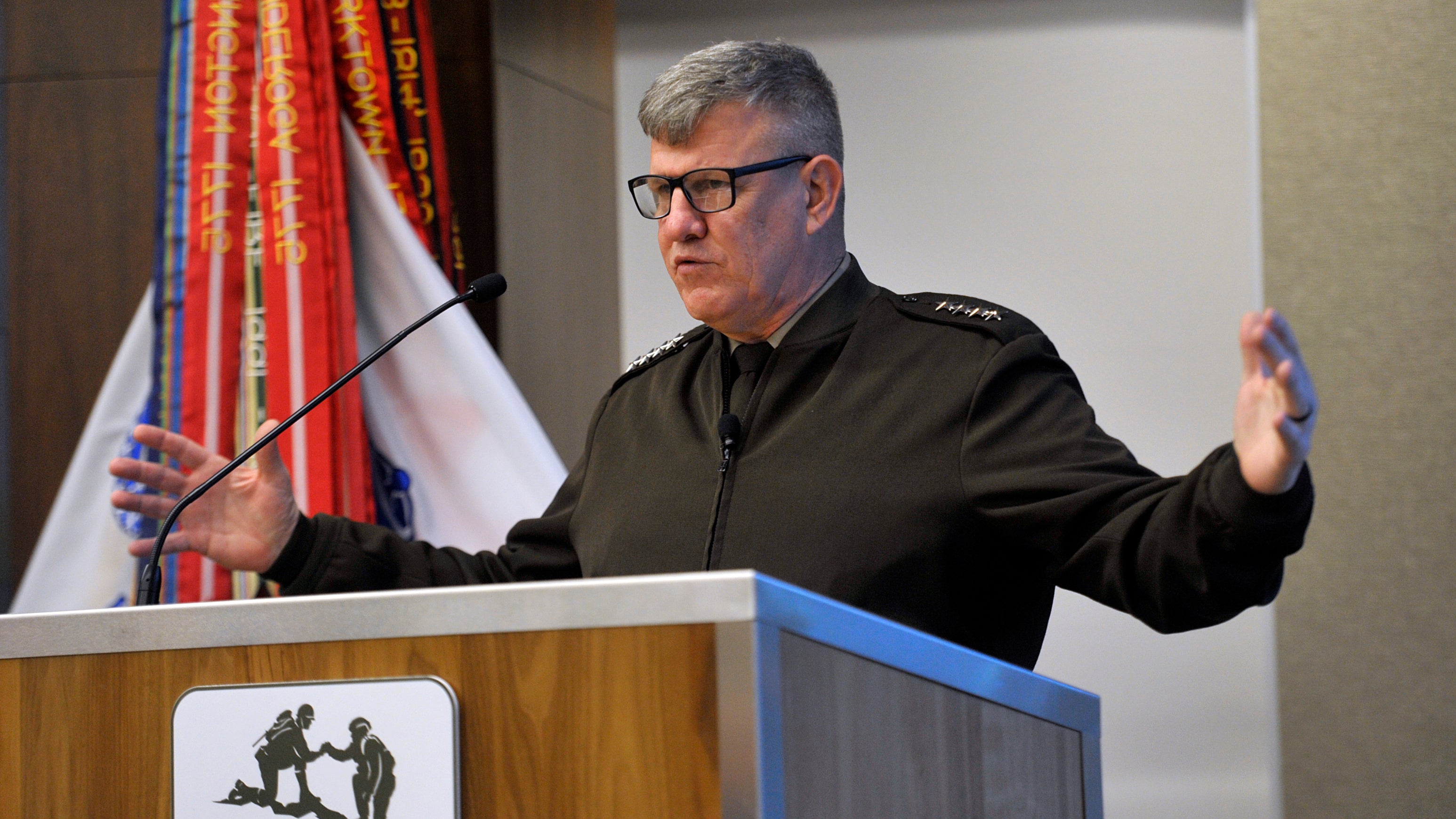Rainey: ‘Good Year’ Keeps Army Modernization On Track
Rainey: ‘Good Year’ Keeps Army Modernization On Track

The Army is keeping pace as it works to meet its modernization goals for the Army of 2030 and beyond, the commanding general of Army Futures Command said.
“We’re continuing on track with our deliberate modernization,” Gen. James Rainey said Dec. 13 during a breakfast hosted by the Association of the U.S. Army as part of its Coffee Series. “It’s been a good year … at Army Futures Command. … We [accomplished] everything we wanted to get done last year.”
The Army’s six modernization priorities include long-range precision fires, next-generation combat vehicles, Future Vertical Lift, air and missile defense, the network and soldier lethality.
As the Army moves ahead with its transformation, part of its approach within the next two years will be a shift from buying capabilities to buying systems, Rainey said. “I want to buy capabilities, not systems,” Rainey said. “We have a lot of legacy unmanned aircraft systems, stuff that is just not keeping up. So, there's an opportunity to get faster, but that's going to change the way we acquire when we start buying a UAS capability versus buying a UAS.”
The service also is looking at formations that integrate humans and machines, standing up a platoon at Fort Moore, Georgia, and another at the National Training Center at Fort Irwin, California, to run tests and experiments. The intent is not to replace humans with robots and autonomous systems, Rainey said, but to find the "optimal combination” of both.
The Army also continues to learn from the fighting in Ukraine and Gaza, Rainey said, adding that he’s “really impressed” with the Army’s ability to learn from emerging global conflict.
“The ability to look at things that are happening in the world and move into a rapid acquisition of capability is something the Army has not been great at for about the last five years,” he said. “We’re starting to reestablish that muscle memory.”
Looking ahead, Rainey said that the Army must make sure its doctrine, organization, training, leadership, education, personnel, facilities and policy are keeping up with the new equipment and technology it’s delivering to the force. The service also will need to “recruit and retain a workforce that is capable of handling … a datacentric Army,” he said.
Soldiers remain the Army’s most lethal weapon, Rainey said. “People are the reason we are the best Army in the world, not technology,” he said. “Our best weapon we still have is a soldier. … The best weapon system we have in the Army is a rifle squad. Period.”

